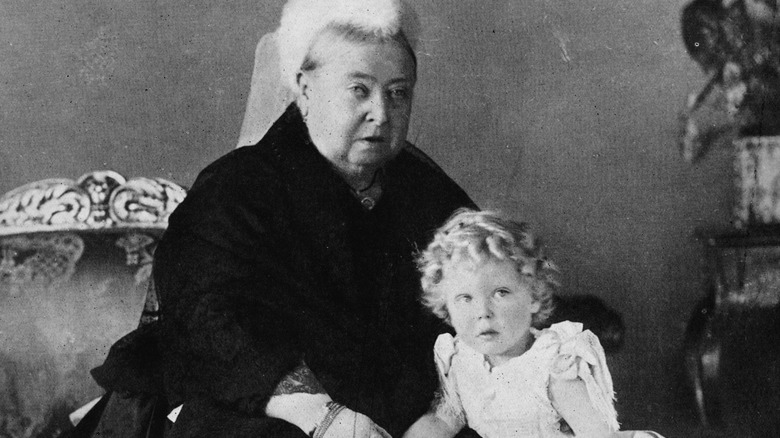The Real Reason People Wear Black At Funerals
Wearing black at funerals seems like a no-brainer choice, right? Black is a sad, doomy-gloomy shade (not a color) best associated with those Goth kids sulking in the parking lot, or a runway model in Milan wearing a super-serious death glare face. Funerals are a time of mourning, not a time to sport a newly-bought, gaudy orange dress while taking Insta-selfies next to a coffin.
Like many simple-looking traditions, wearing black to a funeral has a long history beyond common sense or arbitrary cultural tastes. And yet, a surprising number of cultures around the world have the same tradition of wearing black, or at least dark, clothes to funerals: Vietnam (via Vietnam Online), Germany (via The Funeral Market), Brazil (along with purple, via Funeral Partners), the Maori in New Zealand (via Frazer Consultants), the Xhosa in South Africa (although you can incorporate tribal patterns into clothing, via Hollard), and many more across the world.
Is there actually something inherent or instinctual to wearing black when mourning? Did the tradition somehow make its way across the entire globe from some single historical source? Are we just looking at the effects of globalization and our shared, worldwide, consumerist monoculture? The short answer is yes — all of the above, at least as far as we can tell. We know that customs regarding wearing black at funerals date back to at least the Roman Empire, and got popularized through an unlikely source: Queen Victoria.
Mourning in Rome
Let's be clear: Funeral practices go back to a time before we have even the slightest clue about textiles, furs, or whatever else people were wearing in the hunter-gatherer days. Over 100 billion Homo sapiens (our species) have died; that's a whole lot of funerals and grief (via the BBC). It's impossible to say exactly where one specific custom of wearing one specific shade of garb began.
By the time we reach the comparatively recent past, Ancient Rome, we know that black was standard for funerals. Togas were a common form of clothing from Rome's earliest republic days, back in 753 BCE all the way to 200 CE, as ThoughtCo. explains. People wore very specific types of togas depending on rank, job, and certain events. The standard Toga pura was made of undyed wool and worn by anyone. Toga praetexta had reddish-purple borders and were worn by freeborn people and civil servants. Toga candida were worn by people running for office, and were rubbed with chalk to make them super white. And toga pulla? They were dark togas worn to funerals.
These were not willy-nilly societal norms, either. Roman statesman and famed, master orator Cicero (103 to 43 BCE) gives us a glimpse into the seriousness of Roman clothing etiquette. According to an article in Arethusa, published by John Hopkins University Press (posted on JSTOR), Cicero was once quoted as criticizing someone for being disrespectful and attention-seeking enough to wear a toga pulla at a funeral banquet, rather than the funeral itself.
A queenly precedent
Thanks to Ancient Rome's strict dress code, we've got some historical precedent for wearing black to funerals. But it was Queen Victoria herself, the UK's eccentric, independently-minded, occult-loving, drug-using monarch, who is responsible for the universal proliferation of funeral black. Even though she went through ups and downs in public popularity, Victoria had a tremendous impact on her world, known as the "Grandmother of Europe," no thanks in small part to her 42 grandchildren seeded across various European royal families (via History Extra).
Here's where things get legitimately sad. Queen Victoria got married at the age 20 to her cousin, Prince Albert. By all accounts she was totally mad about him, and also asked him to marry her, rather than the other way around. As History Extra quotes, she wrote in her diary, "He is extremely handsome. His hair is about the same color as mine; his eyes are large and blue and he has a beautiful nose and a very sweet mouth with fine teeth." They were married for over 20 years, and when Albert died in 1861, Victoria was heartbroken. She was so devastated, in fact, that she wore nothing but black for the rest of her life, as Biography reports.
The nobles of the time did their best to imitate their leader. Fast forward over 100 years and the custom has spread across the world.


